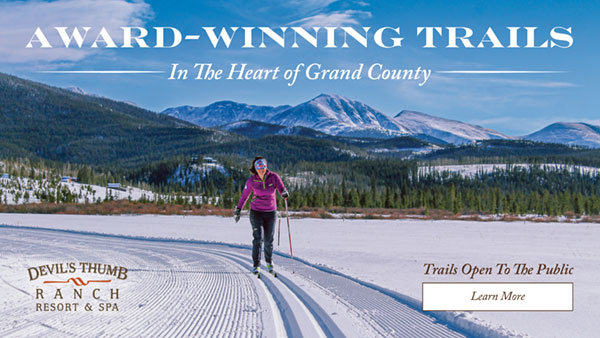Glorious spring days are here! The famous Colorado Blue Bird Days have come back after a cold, but perhaps mercifully short, winter… at least for a little while. Springtime in the Rockies can be fickle and I don’t want to jinx it… even though a town with a name like Winter Park, and a nearby mountain range called The Never-Summers would be expected to have long winters.
Temperatures have risen above and fallen below freezing with some regularity, but not yet far enough to develop a good crust for skiing. The snowpack surface remains a bit soft and we’ve had enough precipitation to form an occasional insulating blanket on top, keeping cold air from sinking deeply into the top surface of the snow and re-establishing a new surface that will need to go through its own freeze-thaw cycle. A semi-supportive crust (in this case a soft, breakable crust) has developed, but not enough to support a skier on the surface reliably. Not every year has a good crust season, and this might be one of those years, but there’s still time for one to develop. The near future does not look likely to promote conditions for it, as over-night lows are expected to be too close to the freezing point to create a really hard, supportive layer. Daytime highs will climb enough to likely saturate the sun-exposed, south-facing snow surfaces with enough moisture to establish a firm surface if the temperatures would only be low enough for long enough in the night to set it up firmly.
Sticking to the groomed trails will soon come to a close with local cross-country ski touring centers aiming for a closing dates around the first or second weekend in April. We will undoubtedly run out of working staff before we run out of snow, as the transient recreational workforce moves on to the next thing, or just takes a Spring Break.
Without groomed options, serious cross-country skiers will have to look to the off-track options to keep the skis sliding into the Spring. Hopefully the crust will firm up. Even if it doesn’t, Spring skiing is something to look forward to with enthusiasm, as the warmth of the sun on ones face, being able to ski in a T-shirt, the corn season above tree-line, the consolidation of the snowpack, reducing the avalanche risk, all make spring skiing super fun.
If you should happen to venture out into the mountains to reap some of the corn harvest, be sure to go with someone familiar with the local snowpack and be sure to have some knowledge about avalanche terrain identification and factors that increase the risk. The corn in the mountains is like the crust in the valleys. It sets up hard in the cold dry night-time air, after getting sun-dampened to wringing wet in the daytime. As long is the snowpack is frozen, chance of snow-slides is minimal. As the daily temperatures rise, at least on sunny days, the surface of the snowpack softens first. If you catch it at the right time, you’ll find 1 to 2 inches of large, loose granular snow crystals over a firm, solid base. This makes for some sublime skiing conditions. But be sure to be done early enough before the snowpack gets so warm and wet that you sink all the way through it even on your skis or board, and before the whole snowpack gets unstable enough to succumb to gravity. As always in Spring Skiing, timing is everything.
See You on the Trails




